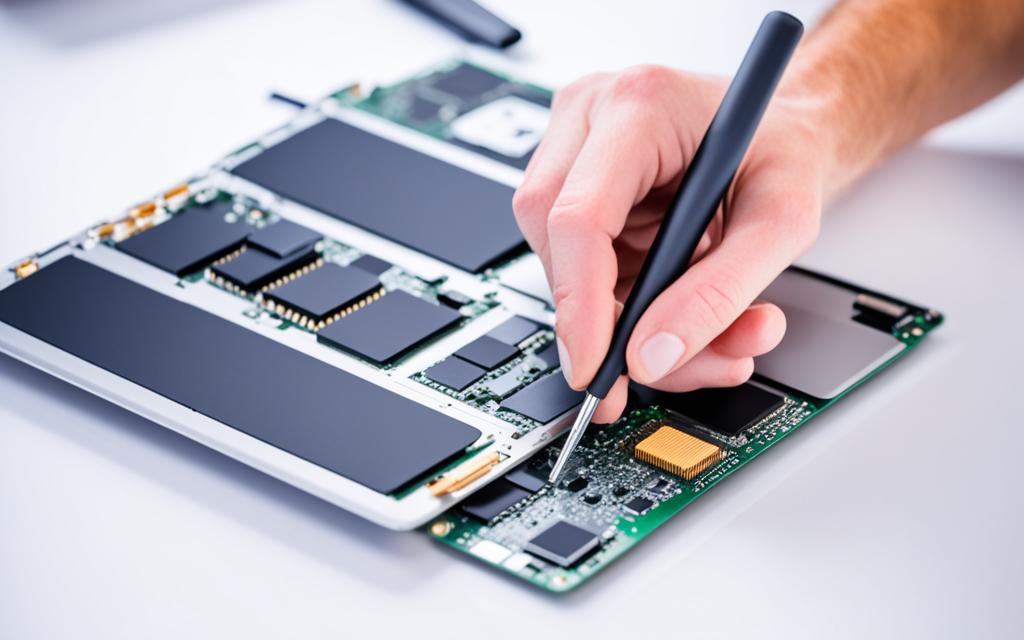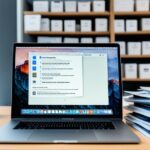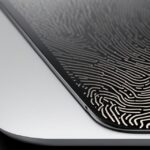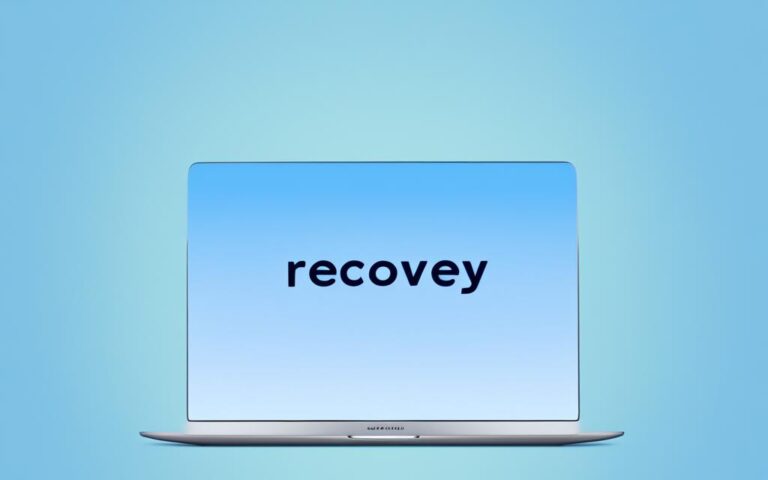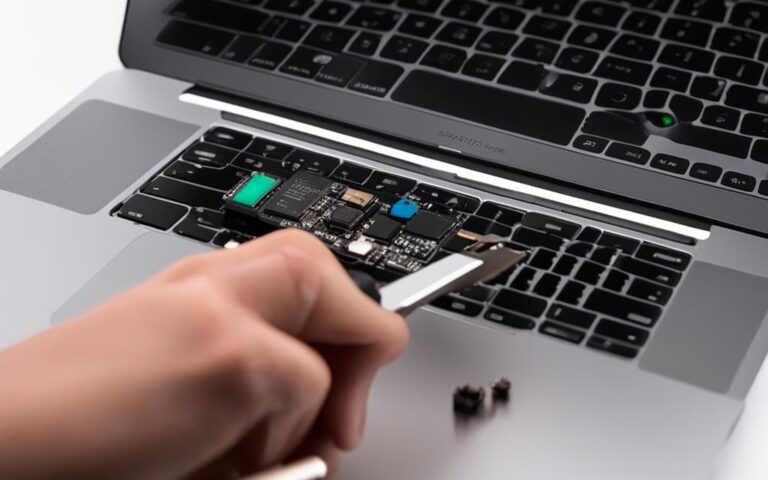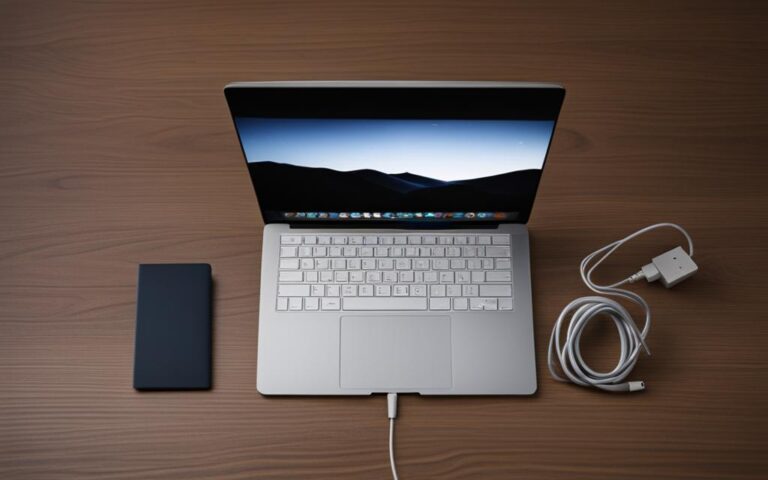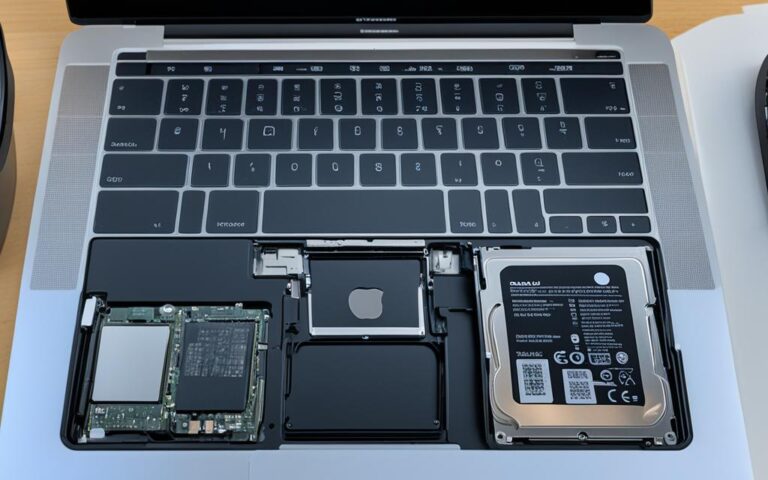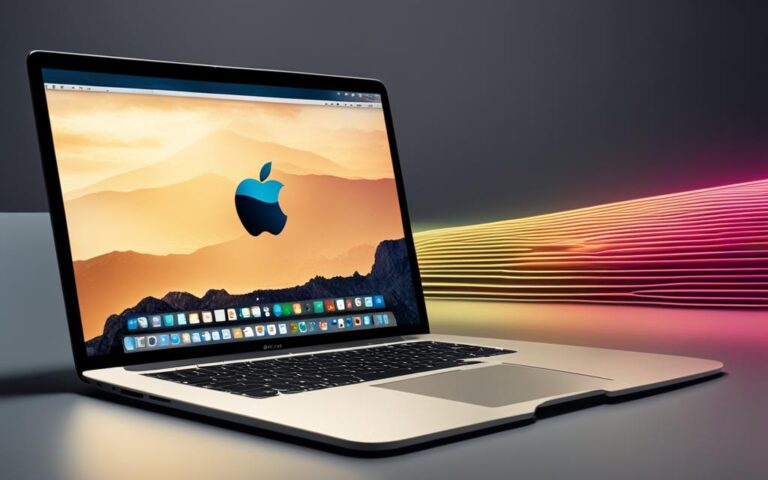MacBook Air Trackpad Repair Techniques
If you’re experiencing issues with your MacBook Air trackpad, such as it not working or being unresponsive, there are several techniques you can try to fix the problem. We’ll explore these techniques in detail to help you resolve the trackpad issues on your MacBook Air.
Having a malfunctioning trackpad can be frustrating, but with the right knowledge and steps, you can often resolve the issue yourself. Whether it’s a trackpad that’s not working, unresponsive, or stuck, this article will guide you through the necessary techniques to get your MacBook Air trackpad back on track.
In Section 2, we’ll discuss the possible reasons why your trackpad is not working on your MacBook Air. Identifying the cause is the crucial first step in finding the right solution.
Why is My Trackpad Not Working on My MacBook Air?
If you’re experiencing issues with your MacBook Air trackpad, such as it not working or being unresponsive, it can be extremely frustrating. But don’t worry, there are several possible reasons why your trackpad is not working, and most issues can be resolved with a few simple steps.
1. Outdated Software: One of the common causes of trackpad issues is outdated software. Make sure you have the latest version of macOS installed on your MacBook Air. Software updates often include bug fixes and improvements that can address trackpad problems.
2. Incorrect System Settings: Check your Mac’s settings to ensure they are properly configured for the trackpad. Go to the “Trackpad” section in “System Preferences” and verify that the appropriate options are selected for cursor speed, scrolling, and gestures. Adjusting these settings may resolve the problem.
3. Peripheral Interference: External devices connected to your MacBook Air, such as a USB mouse or wireless keyboard, can sometimes interfere with the trackpad. Disconnect any external peripherals and check if the trackpad starts working again.
4. Dust Accumulation: Over time, dust and debris can accumulate on the trackpad, affecting its responsiveness. Clean the trackpad using a soft, lint-free cloth or a microfiber cloth. Gently wipe the surface in circular motions to remove any dirt or grime.
5. Hardware Failure: In some cases, the trackpad may not be working due to a hardware failure. This could be caused by a faulty trackpad module or a loose connection. If none of the software-related solutions work, it may be necessary to take your MacBook Air to an authorized service provider for further diagnosis and repair.
“The trackpad of my MacBook Air stopped working suddenly, and I was really worried. I tried restarting the laptop, updating the software, and even resetting the trackpad settings, but nothing seemed to fix the issue. It was only when I disconnected the external mouse that I realized it was causing interference and disabling the trackpad. Once disconnected, the trackpad started working perfectly again!” – Sarah R., MacBook Air user
By identifying the cause of the trackpad issue and following the appropriate troubleshooting steps, you can often resolve the problem without the need for professional assistance. However, if the trackpad still doesn’t work after trying these solutions, it’s recommended to reach out to Apple Support or an authorized service provider for further guidance.
Summary
When your trackpad is not working on your MacBook Air, it can be a frustrating experience. However, most trackpad issues can be resolved by checking for outdated software, adjusting system settings, disconnecting peripheral devices, cleaning the trackpad, or seeking professional help for hardware failures. Remember to always keep your MacBook Air and its software up to date to minimize the risk of trackpad problems.
Next, we’ll explore detailed steps on how to fix an unresponsive trackpad on a MacBook. Stay tuned!
| Common Causes of Trackpad Issues | Potential Solutions |
|---|---|
| Outdated software | Update macOS to the latest version |
| Incorrect system settings | Adjust trackpad settings in System Preferences |
| Peripheral interference | Disconnect external devices |
| Dust accumulation | Clean the trackpad surface |
| Hardware failure | Seek professional assistance |
How to Fix an Unresponsive Trackpad on Mac?
If you’re facing an unresponsive trackpad issue on your MacBook, there are several simple steps you can take to try and fix it before seeking professional help. These troubleshooting techniques can often resolve trackpad issues without the need for extensive repairs or replacements.
- Clean the trackpad: Start by gently cleaning the trackpad surface with a soft, lint-free cloth. This will remove any dirt, dust, or debris that may be causing the unresponsiveness.
- Check for peripheral interference: Sometimes, external devices or wireless peripherals can interfere with the trackpad’s functioning. Disconnect any external devices or Bluetooth devices and check if the trackpad responds.
- Update macOS: Keeping your operating system up to date can often resolve software-related issues. Go to the Apple menu, select ‘System Preferences’, and click on ‘Software Update’ to check for any available updates for your MacBook.
- Disable Force Click: Force Click is a feature that provides additional functionality when pressing harder on the trackpad. Disabling this feature may help resolve trackpad responsiveness problems. Go to ‘System Preferences’, open the ‘Trackpad’ settings, and uncheck the ‘Force Click and haptic feedback’ option.
- Reset trackpad settings: Resetting the trackpad settings can often resolve minor configuration issues. Go to ‘System Preferences’, click on ‘Trackpad’, navigate to the ‘Point & Click’ tab, and click on the ‘Restore Defaults’ button.
- Perform a reset of NVRAM, PRAM, and SMC: Resetting the Non-Volatile Random-Access Memory (NVRAM), Parameter Random-Access Memory (PRAM), and System Management Controller (SMC) can help resolve various hardware-related issues. Refer to the Apple Support website for detailed instructions on how to perform these resets for your specific MacBook model.
| Issue | Possible Solution |
|---|---|
| Unresponsive trackpad | Clean the trackpad, check for peripheral interference, update macOS, disable Force Click, reset trackpad settings, and perform a reset of NVRAM, PRAM, and SMC. |
| Trackpad not clicking | Adjust trackpad settings, enable tap to click, check accessibility settings, reset trackpad settings, and perform a reset of NVRAM, PRAM, and SMC. |
| Erratic cursor movement | Adjust trackpad sensitivity, clean the trackpad surface, update macOS, disable Force Click, and reset trackpad settings. |
| Trackpad gestures not working | Check trackpad gesture settings, update macOS, disable Force Click, reset trackpad settings, and perform a reset of NVRAM, PRAM, and SMC. |
By following these steps, you can often fix an unresponsive trackpad on your MacBook without the need for professional assistance. However, if the issue persists or if you’re uncomfortable performing any of the troubleshooting steps, it’s recommended to reach out to Apple Support or an authorized service provider.
Common Causes of a Stuck Trackpad on MacBook
A stuck trackpad on your MacBook can be caused by various factors. Understanding these common causes is essential in diagnosing and troubleshooting the issue effectively.
Bloated Battery
One of the most common causes of a stuck trackpad is a bloated battery. When the battery swells up, it can apply pressure on the trackpad, making it difficult or impossible to move.
Liquid Ingress
Accidental spills or exposure to liquid can lead to a stuck trackpad. Liquid ingress can affect the internal components of the trackpad, causing it to become unresponsive.
Outdated Drivers
Outdated drivers can also contribute to a stuck trackpad issue. If the drivers responsible for trackpad functionality are not up to date, it can result in erratic behavior or complete unresponsiveness.
Corrupted Files
Corrupted system files or trackpad-specific files can interfere with the proper functioning of the trackpad, causing it to get stuck. This can happen due to software issues, improper shutdowns, or malware infections.
System Boot Failure
In some cases, a stuck trackpad can be related to system boot failure. If the MacBook fails to boot up properly, it may prevent the trackpad from functioning correctly.
To resolve a stuck trackpad issue on your MacBook, it’s important to identify and address the underlying cause. In the next section, we’ll explore how to fix a stuck trackpad on a MacBook, providing step-by-step instructions to help you resolve the issue.
How to Fix a Stuck Trackpad on MacBook
If you’re facing a stuck trackpad issue on your MacBook, it can be frustrating and hinder your productivity. Fortunately, there are several steps you can take to fix the problem and get your trackpad working smoothly again.
Here are the troubleshooting steps you can follow:
- Clean the trackpad: Start by gently wiping the trackpad surface with a microfiber cloth. This can remove any dirt, dust, or debris that might be causing the trackpad to stick.
- Reboot your MacBook: Sometimes, a simple restart can resolve minor software glitches that may be affecting the trackpad’s functionality. Go to the Apple menu and click on “Restart” to reboot your device.
- Disconnect peripheral devices: External devices connected to your MacBook, such as mice or external keyboards, can sometimes interfere with the trackpad. Disconnect all peripheral devices and check if the trackpad starts working properly.
- Update macOS: Keeping your operating system up to date is essential for optimal performance. Go to the Apple menu, select “System Preferences,” and click on “Software Update” to check for any available updates. Install them if any updates are found.
- Reset trackpad settings: Sometimes, resetting the trackpad settings can help resolve issues. Go to the Apple menu, select “System Preferences,” and click on “Trackpad.” From there, you can adjust the trackpad settings or click on the “Reset All Settings” button to restore the default settings.
- Delete trackpad property files: Deleting the property files associated with the trackpad can often fix problems. Open the Finder and navigate to the “~/Library/Preferences” folder. Search for any files containing “trackpad” in their names and move them to the Trash. Restart your MacBook after deleting the files.
- Uninstall or update third-party drivers: If you have any third-party drivers installed that control the trackpad, try uninstalling or updating them. In some cases, incompatible or outdated drivers can cause trackpad issues.
- Reset PRAM or VRAM: Resetting the PRAM (Parameter Random Access Memory) or VRAM (Video Random Access Memory) can help fix various hardware-related problems. Restart your MacBook and hold down the Command + Option + P + R keys until you hear the startup sound for the second time.
- Reset SMC: The System Management Controller (SMC) handles various hardware functions, including the trackpad. Resetting the SMC can often resolve hardware-related issues. Shut down your MacBook, then press and hold the Shift + Control + Option + Power buttons for 10 seconds. Release the keys and turn on your MacBook.
- Reinstall macOS: If all else fails, reinstalling macOS can be a last resort. Back up your important files, then restart your MacBook in Recovery mode by holding down Command + R. Follow the on-screen instructions to reinstall macOS.
Conclusion
MacBook Air trackpad issues can be frustrating, but by following the techniques and steps discussed in this article, you can often resolve the problems yourself. It’s important to start with the simple steps like cleaning the trackpad and checking for peripheral interference. Updating your macOS and resetting trackpad settings can also help. However, if none of these troubleshooting steps work, it’s recommended to seek professional help from Apple Support or an authorized service provider. Remember to always be careful when attempting any repairs on your own to avoid further damage to your MacBook Air.
In conclusion, the trackpad repair techniques outlined in this article can save you time and money by empowering you to fix many common trackpad issues on your MacBook Air. Taking the time to understand the potential causes of trackpad problems and following the step-by-step instructions provided can often result in a successful resolution. However, if your trackpad issues persist or if you’re uncomfortable performing the repairs yourself, don’t hesitate to reach out to the experts for assistance.
Remember, your MacBook Air is a valuable investment, and ensuring its trackpad is in optimal condition is essential for a smooth and enjoyable user experience. By implementing the troubleshooting tips and seeking professional assistance when needed, you can maintain the functionality of your trackpad and continue to make the most out of your MacBook Air.
